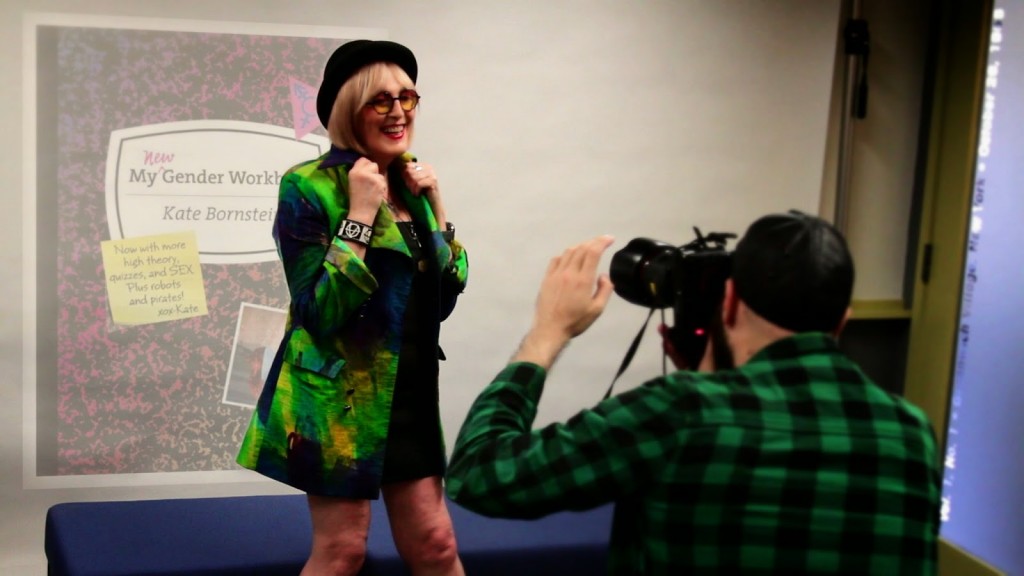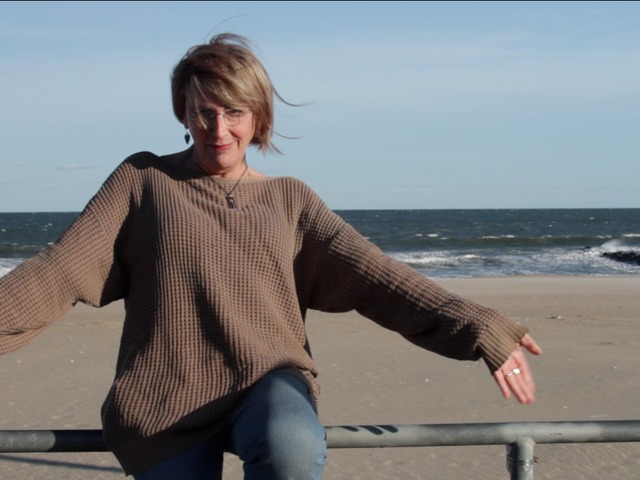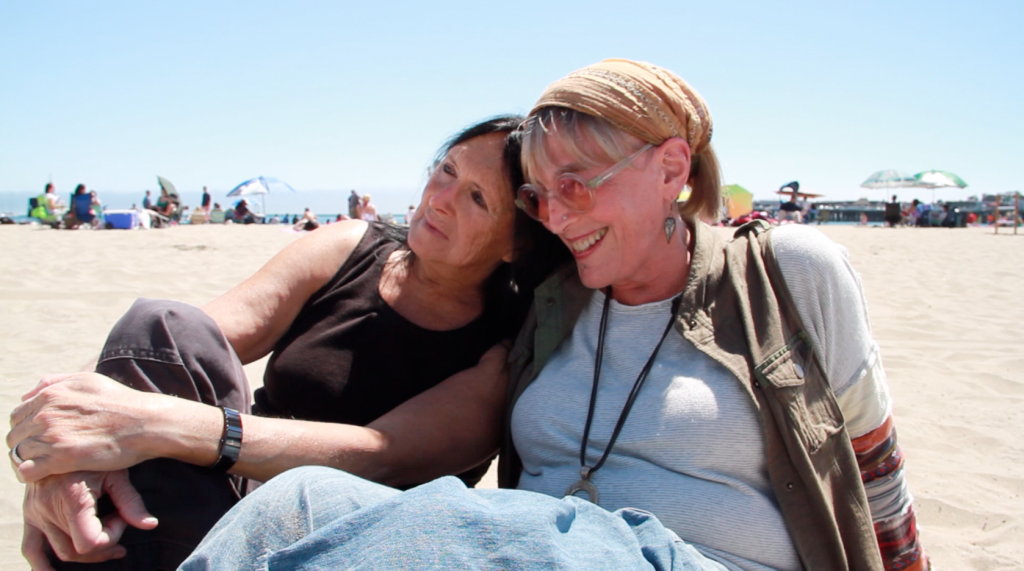When I was a kid, one of the first trans* characters (the asterisk denotes the spectrum of gender identity) I saw onscreen was at a drive-in: she used martial arts to kick the shit out of some cisgender straight guy and held a gun to the head of another. If you haven’t actually seen Freebie and the Bean (and you shouldn’t), you might think those scenes sound pretty cool, but that character (and I’m using the word loosely) is one in a long line of dangerous, deceptive, twisted trans* women. The revelation that a “man” is wearing a wig and a dress while killing or assaulting victims–as in Psycho or later in Dressed To Kill and Silence of the Lambs–is a “shocking” twist, meant to further repulse the audience.
Recent efforts haven’t fared much better: films have just traded one trope for another. Instead of the evil trans* woman we now have the suffering trans* woman whose main function is to endure whatever cruelty and degradation the filmmakers wish to throw at her in Transamerica or the recent Dallas Buyers Club, a film I haven’t seen out of principle (I was on the fringes of AIDS activism in the 90s: straight men weren’t the protagonists of that story), but which seems predicated on a trans woman suffering and acting as a human sacrifice so the formerly transphobic “straight” guy star can show the audience how compassionate and accepting he’s become.

We have to turn to documentaries to find transfeminine characters in film who are fully formed (and also actually played by transfeminine people) whether they are the stars of Paris Is Burning, the lesser known (but still excellent) solo portrait Split or are part of the protagonist’s life as seen in Southern Comfort. Trans director Sam Feder’s Kate Bornstein is a Queer and Pleasant Danger (although it is named after Bornstein’s memoir the film is not an adaptation of the book) is the long overdue documentary on trans performer, writer and thinker Kate Bornstein (and will play as part of Outfest in Los Angeles on July 12).
Bornstein–with her trademark Anna Wintour bob, facial piercings, tattoos, and multicolored glasses–is someone whose work is as distinctive as her appearance. I’ve seen and heard her many times through the years, mostly in performances, readings and interviews, but I’ve read just a small fraction of her impressive output. So in a lot of ways, I felt like I either knew not enough or too much to be part of the intended audience for this film. Occasionally the film would tell me something I didn’t already know, as when we find out Bornstein’s first person account and resource about staying alive in spite of suicidal thoughts: Hello Cruel World was dedicated to a friend’s son who had killed himself. But more often as the film acts as a kind of “Kate Bornstein 101” we see performances and listen in on readings that are familiar to many of us. I would’ve liked more of Kate (or someone) reading the work she usually doesn’t include in her performances and readings.
The sequence in which Bornstein talks about her estranged daughter, Jessica, with the woman who is the daughter’s biological mother just left me with more questions. Both parents were Scientologists at the time and because the daughter is still active in Scientology she is forbidden from seeing Bornstein, but what of her other mother? We don’t find out, the same way we don’t find out why a pre-transition Bornstein was a single parent for part of Jessica’s very early life.
We feel the ache Bornstein has for the absence of her daughter (and grandchildren, whom she has never met) 40 years after she last spent time with Jessica. Perhaps partly because of this loss, Bornstein takes on the role of actively encouraging and nurturing younger transfolk. She says she looks forward to the world these 22-year-olds will preside over, and it’s them she’s talking about when she asserts she would like to be remembered as “someone who looked after her kids.” But in spite of the mutual love she and the younger generation of trans people have for one another, like a lot of loving parents, Bornstein seems, at times, to have trouble listening to her children. Bornstein, along with other prominent transfolk of her generation, Mx Justin Vivian Bond and Jack Halberstam defends the label “tr*nny”–but in the film she seems to confuse the word with trans identity itself, which is puzzling since Bornstein was one of the first public figures to identify primarily as “trans” instead of as a man or woman– a decision she explains during a performance/lecture captured in the film.

Like the other well-known trans people who wish to celebrate the word “tr*nny,” she doesn’t distinguish between being able to claim the label for herself and using it for other trans people–especially trans women–who consider the word a slur. Some who advocate for its use have likened “tr*nny” to “queer” which was also once a controversial, reappropriated label (one that still makes many straight people uncomfortable), but the difference is that “trans” can pretty much always be used instead of “tr*nny”, but “queer” isn’t always interchangeable with the more respectable “LGBT”: a lot of us who identify as “queer women” would object to being called “lesbian,” “bisexual,” or the completely clueless “gay.” A better analogous word to “tr*nny” might be “f*ggot” which some gay men call themselves but don’t wish those outside their community to call them–ever.
Bornstein has had a lot of influence, not just on younger trans people, which we see, but also on other trans writers and performers, none of whom are interviewed in the film. Instead we see repeat scenes of Bornstein in her brownstone apartment, interacting with her animals. I spend a lot of my time petting my cat and telling her how wonderful she is too, but in a fairly short film about someone with as many ideas as Bornstein has (and as many different types of lives she’s led), including more than one of these scenes seems like wasted time.
We also don’t see the sea change that has happened in the past few years: instead of white people (most of them, except for Bornstein and a few others, transmasculine) at the forefront of trans visibility and advocacy, as they were in the 1990s and 2000s, now women of color like Janet Mock and Laverne Cox are the face of the trans community. And because those women have a larger platform than writers and performers like Bornstein ever had (Mock is a former editor at People.com and Cox is featured in the wildly popular Netflix show Orange Is The New Black), more people know them, following them on Twitter and their appearances in the media. And as Bornstein has made trans suicide an issue she tries to draw attention to, Cox and Mock have both used their fame to publicize issues the mainstream media might not otherwise cover–and which white trans activists have also been slow to rally around, like the unjust imprisonment of trans women of color Cece McDonald and Jane Doe. So seeing Bornstein portrayed in a vacuum in the film is frustrating. We see her with friends, with her partner Barbara Carrellas, adoring college-age audiences and in one blink-and-you-miss-it scene the men behind Original Plumbing who acknowledge their debt to her, saying, “You came before us and carved out space.” But we don’t really see or hear prominent trans activists and public figures talk in any depth about her influence on their own work and lives–even those who have written and talked about that influence elsewhere. This omission seems especially glaring since Bornstein herself has publicly expressed admiration, on Twitter and elsewhere, for those who have come after her.
Know what makes me proud? @janetmock grand marshal #SFPride, @Lavernecox grand marshal #nycpride. Wow. #NeverThoughtIdLiveToSeeTheDay #trans
— Kate Bornstein (@katebornstein) June 30, 2014
Though Bornstein has had a litany of serious health problems in recent years, we still see her with a vaporizer pen for much of the film (she quit smoking and vaping in 2012 after a cancer diagnosis). At the end Kate faces a health crisis and comes to an epiphany. She states, “For the first time in my life I realize I want to stay…I’m doing everything I can to make that happen.” As a coda we find out her current prognosis is good. She might just live long enough to see those college kids in charge after all.
Trailer for Kate Bornstein Is a Queer and Pleasant Danger from sam feder on Vimeo.
____________________________
Editor’s note: corrections have been made from the original review, which made it sound as if Bornstein continued to smoke after a cancer diagnosis; she quit the day she found out.
___________________________________________________
Ren Jender is a queer writer-performer/producer putting a film together. Her writing besides appearing every week on Bitch Flicks has appeared in The Toast, xoJane and the Feminist Wire. You can follow her on Twitter @renjender.

